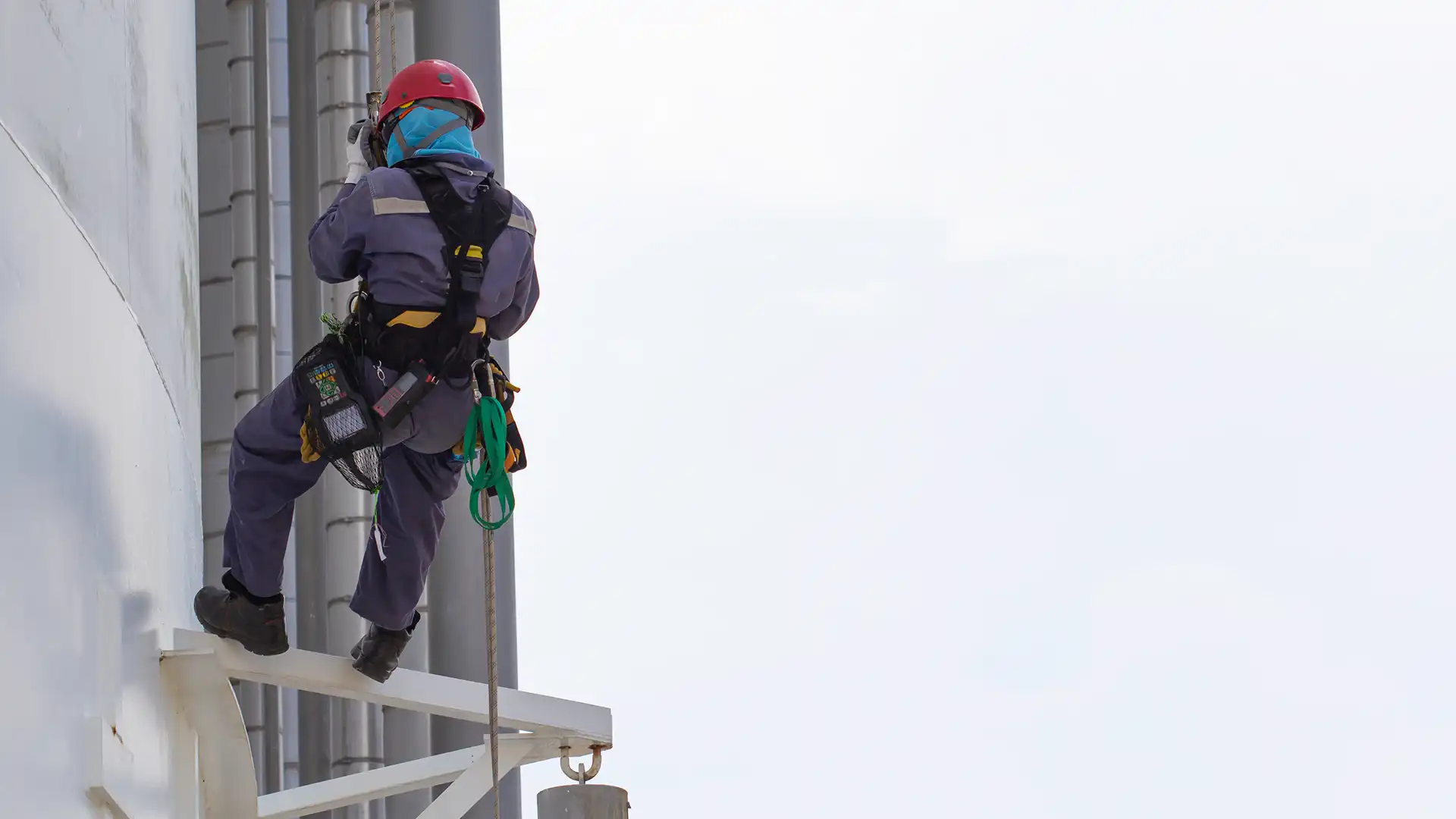In using a double leg lanyard, mistakes can significantly jeopardize the safety of working at height and put workers’ lives at risk. Designed to ensure safety during work at height, double leg lanyards minimize fall risks when used correctly. EKS Work Safety, a team specialized in equipment for working at height, offers high-quality lanyards and guidance to enhance user safety. Here are the five most common mistakes in using a double leg lanyard:
1. Choosing an Inappropriate Length
One of the frequent errors in using a double leg lanyard is selecting a lanyard length unsuitable for the work environment. The length of a lanyard directly affects a worker’s mobility and safety. A lanyard that is too short may restrict movement, reduce work efficiency, and lead to hazardous positioning. Conversely, a lanyard that is too long increases the fall distance, amplifying impact force and potentially causing serious injuries. For instance, using a long lanyard in a confined space heightens the risk of a worker dangling. EKS Work Safety offers lanyards in various lengths tailored to different work environments to help prevent this mistake. Analyzing the work area, considering anchor point positions, and accounting for height differences are essential to selecting the most appropriate length.
2. Neglecting Equipment Condition
Using a lanyard without checking its physical condition poses significant safety risks. Double leg lanyards can wear out under harsh work conditions, come into contact with sharp edges, or show weakened stitching over time. If such damage goes unnoticed, the lanyard may fail to function during a fall. For example, a torn lanyard or a worn-out hook could break during a fall, endangering the worker. Users must inspect the lanyard’s fabric for tears, stitching for looseness, or hooks for deformation. Damaged equipment should never be used and must be replaced immediately.
3. Misusing Anchor Points
Selecting incorrect anchor points is one of the most critical mistakes in using a double leg lanyard. Anchor points must be fixed, durable structures to which the lanyard is attached; however, connecting to a weak, movable, or unsuitable point eliminates safety entirely. For instance, attaching a lanyard to a pipe or an unstable structure could cause the anchor to fail during a fall. Additionally, the anchor point’s position should not restrict the worker’s movement and must be easily accessible. Pre-evaluating the job site and establishing appropriate systems are necessary for correct anchor selection. EKS Work Safety provides professional guidance and anchor solutions in this process.
4. Insufficient User Training
Lack of training creates a significant safety gap in using a double leg lanyard. Untrained users may not know how to attach the lanyard, lock hooks, or follow the correct usage sequence. This can lead to incorrect connections or risky actions. For example, a worker detaching one lanyard arm before securing the other violates the “100% tie-off” principle, increasing fall risk. EKS Work Safety offers comprehensive training programs to help users avoid such errors. These programs cover proper lanyard use, anchor point connection techniques, and emergency procedures. Trained workers enhance the safety of themselves and colleagues, acting more consciously on the job site.
5. Non-Compliance with Usage Rules
Failure to follow usage rules can render a double leg lanyard ineffective. Common errors include not fully locking hooks, allowing the lanyard to contact sharp surfaces, or detaching both arms from anchor points simultaneously. Such oversights can cause the lanyard to fail during a fall. Additionally, avoiding contact with sharp edges and regularly inspecting the lanyard during use are essential. EKS Work Safety provides detailed usage guides to minimize these errors.
Contribution of Avoiding Mistakes to Work Safety
Avoiding these mistakes in using a double leg lanyard enhances workplace safety and prevents accidents. EKS Work Safety emphasizes the importance of proper equipment selection, regular maintenance, and training for users. This approach ensures workers can operate safely at height and supports uninterrupted work processes.
Moreover, correct usage and regular maintenance boost job site efficiency and reduce accident risks. This protects worker health and prevents potential financial losses for employers. Promoting a safety culture fosters a more sustainable and productive work environment in the long term.
Conscious Use for Safe Work
Mistakes in using a double leg lanyard create preventable risks. EKS Work Safety aims to minimize these errors with high-quality lanyards and expert support. Proper length selection, regular inspections, suitable anchor points, comprehensive training, and adherence to usage rules ensure a safe work environment.
You can visit our LinkedIN page for more.



 by
by